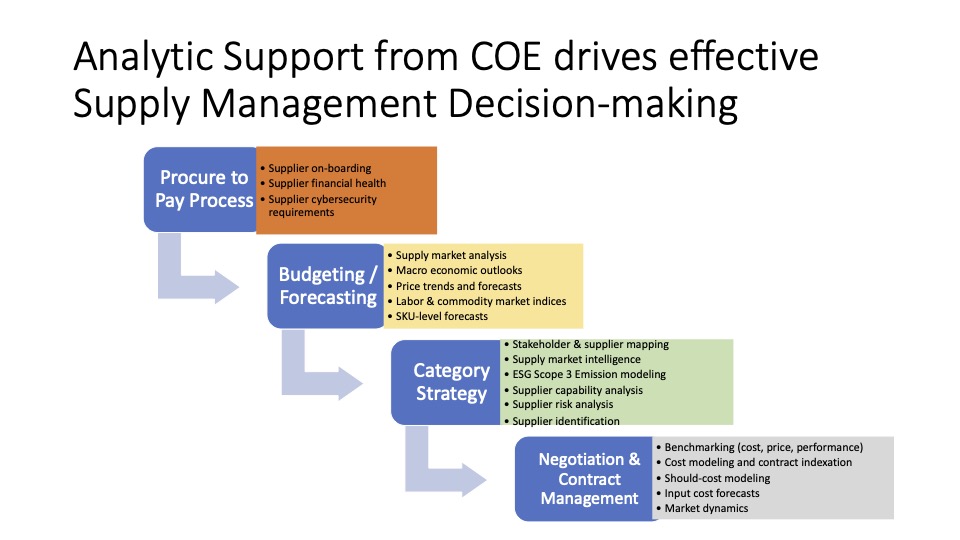Ralph Lauren's Supply Chain: A Lot More Complex Then You Think!
Jeff Holcomb, Senior Vice President of Customer Operations and US Transportation at Ralph Lauren’s offices in Greensboro, NC spoke in my MBA supply chain class last week. He told the story of when Ralph Lauren came to visit the Greensboro offices, and shared his previous experiences. Apparently, Lauren once had an idea about creating a wider tie when he was working in New York as a sales person in a large department store. He did so, and then later broke out with his own company. On his visit to Greensboro he met with the local supply chain team, and openly admitted that he didn’t know what the details of logistics were all about today. However, he did note that at one time, he was the entire supply chain department for his organization! Not only was he the sales person, but he took orders, and shipped them to the customer!
Today, Ralph Lauren is a much larger organization – focusing on luxury goods with multiple sales channels. At the core of the business is Lauren’s apparel offering, which focuses on “who you want to be”, and aspirational clothing. But the company has also moved into footwear and accessories, and is now recognized as one of the world’s leading brands. At the enterprise level Holcomb described how RL is focusing on expanding its international presence, development of new lines, and new brands. The company now has over 30,000 global associates. The challenge for Lauren is that the supply chain organization is a shared service, with its core value being to collaborate with Lauren’s international enterprises and provide unique solutions for them through close relationships. Holcomb notes that “we never want to be the element that say “no” when the business has a supply chain issue that is challenging the way they to market their products and their brand.”
This means being extremely flexible. The best way to envision the variety is to consider a cube consisting of brands, commercial groups, and channels. There are about 30 total brands managed by individual commercial groups with a number of key marketing (e.g. supply chain) channels: factory outlet, wholesale (e.g. Macy’s and Dillards), retail (full-priced Ralph Lauren stores across the world), and a growing e-commerce channel. Each of these channels has a unique set of inventory positioning and distribution requirements, and so does each of the 30 brands and commercial regions (US, Brazil, Europe, Asia). And e-commerce is growing in complexity and growth, as this means moving to single customer packages, as opposed to large shipments into wholesalers and stores on a pallet. (Amazon and Walmart are talking about same-day service with pilot underway.)
From a geography standpoint – Ralph Lauren not only buys in every geography, but sells in every geography. The Mansion is the Flagship in New York, and there are others in Hong Kong, Shanghai, Paris, Moscow, and multiple other cities. Additional complexity occurs because of the diversity of local tastes required to accommodate customer needs at every store. More store formats are making the supply chain more complicated with a totally different assortment. In Aspen it will be ski apparel, in Beverly Hills more luxury, and Cannes more beachwear.
This results in a very complex supply chain network: 800 factories and product licensees, 400 vendors and 200+ consolidator logistics carriers, 20 Distribution / fulfillment centers, 60+ non-inventory holding DC’s and 10,000 points of delivery, with 5M plus shipments annually!
To meet this challenge, Holcomb discussed how he views the core challenges his team has to meet:
1. We approach every solution with no operational constraints on the business and we want to make sure that we respond to our internal partners. These internal commercial partners are asking ” I want to be able to do this for my customer, and I need you [the supply chain partner] to help me design the solution.” The only time I’ll push back is if they think they already know how to provide the solution! I will tell them – “let us design the solution for you!” We won’t put any operational constraints on you but let us do the design of it!
2. We must optimize investment and infrastructure as we will need to grow. We will get a better return on a store location than we ever will on material handling equipment or a distribution center. “You can’t sell product that is in a DC!” Holcomb emphasizes making prudent decisions on where Lauren invests – while still being flexible . You can build whiz-bang solutions – but you need to think about how it will constrain your business. What if it is different a year from now? You need a solution that provides more than one way to run the business.
3. We must be service aligned. There are no bad supply chain solutions, just misaligned ones.
4. We must be scalable to leverage global capbilities.
5. We must develop the talent that we have and what we will need tomorrow.
Ralph Lauren is a company that thrives on complexity. With more than 100,000 new SKU’s generated and retired in a year, with multiple brand channels and geographic risk, there is no doubt that they will need more of NC State’s supply chain students in the years ahead! We hope to be part of Ralph Lauren’s journey.


